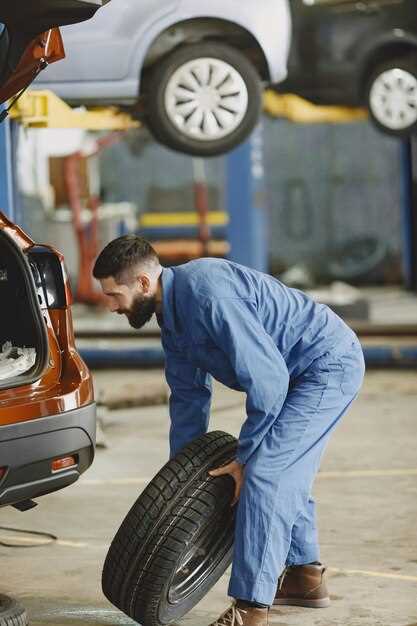
In the world of automotive performance, the importance of handling and suspension cannot be overstated. A well-tuned suspension system is essential for maximizing grip and stability, which ultimately translates to a safer and more enjoyable driving experience. Whether you are a weekend racer or simply looking to improve your daily commute, understanding the fundamentals of car handling can greatly enhance your vehicle’s performance.
Proper suspension setup involves more than just replacing worn-out components. It requires a comprehensive understanding of geometry, spring rates, and dampening characteristics. Each element plays a crucial role in how your car behaves on the road or track. For those looking to upgrade their suspension system, it’s vital to consider not only the parts you choose but also how they interact with existing components.
Additionally, fine-tuning your car’s alignment settings can yield significant improvements in handling. Adjustments to camber, caster, and toe can result in better tire wear and increased stability during cornering. This article delves into practical tips and techniques for enhancing your car’s handling and suspension, empowering you to make informed decisions that will elevate your driving experience.
Adjust Tire Pressure for Optimal Grip
Maintaining the correct tire pressure is crucial for achieving optimal grip and handling performance of your vehicle. Tire pressure affects the contact patch between the tire and the road, influencing traction, stability, and overall driving experience.
Start by consulting your vehicle’s owner manual or the sticker located on the driver’s side door jamb for the manufacturer-recommended tire pressures. These values provide a baseline for performance, ensuring that tires are neither over-inflated nor under-inflated. Over-inflation can lead to reduced contact area, resulting in a harder ride and diminished grip. Conversely, under-inflation increases the contact patch, which may enhance traction but can lead to increased tire wear and reduced handling precision.
For optimal grip, adjust tire pressures according to the specific driving conditions. During high-performance driving or on track days, slightly lowering tire pressure can increase the contact patch, providing better grip and traction. However, be cautious, as too low pressure can cause tire overheating and failure. A common practice is to lower tire pressure by about 2-4 psi from the recommended setting, but always monitor tire temperatures and tread wear to ensure the adjustment is beneficial.
Conversely, for everyday driving or on wet surfaces, keeping tires at their recommended pressure is advisable. Higher tire pressures can enhance fuel efficiency and minimize rolling resistance but may sacrifice grip during challenging conditions. Regularly check tire pressure, especially before long trips or after changing temperature conditions, as air temperature can significantly influence pressure readings.
Utilize a reliable pressure gauge to ensure accurate measurements. It’s best to check tire pressure when tires are cold since driving causes them to heat up and increases pressure readings. Make adjustments accordingly and remember to check all four tires, as they may not always wear evenly.
Maintaining the correct tire pressure can lead to improved handling characteristics, extended tire life, and a safer driving experience. Regular checks and adjustments based on driving conditions will keep your tires performing at their best, ensuring optimal grip on the road.
Select the Right Suspension Setup for Your Driving Style

Choosing the ideal suspension setup is pivotal for maximizing your vehicle’s handling and overall driving experience. Your driving style, whether aggressive street driving, casual cruising, or competitive racing, greatly influences the appropriate suspension configuration.
If you prefer a sporty driving style that prioritizes cornering performance and responsiveness, consider a stiffer suspension setup. This typically involves upgrading to performance shocks and struts, as well as utilizing stiffer springs. Such configurations reduce body roll and enhance feedback during aggressive maneuvers, providing a more connected feeling to the road.
For drivers who enjoy a more comfortable ride focused on daily commuting or long-distance travel, a softer suspension setup may be ideal. This setup allows for more body movement and can absorb bumps more effectively, resulting in a smoother ride. Consider using progressive rate springs along with adjustable dampers to strike a balance between comfort and handling.
Off-road enthusiasts should take a different approach. A suspension system designed for off-road driving incorporates features like longer travel shocks and rugged springs to handle uneven terrain. Adjustable ride height can also be beneficial, allowing drivers to modify ground clearance according to the trail conditions.
Ultimately, assessing your primary driving conditions is essential. Consider factors such as road quality, typical weather, and the intended use of your vehicle. Testing various setups, if possible, will help you understand their impact on your driving experience. Don’t forget to consult professionals and consider expert recommendations to tailor your suspension setup perfectly to your needs.
Utilize Performance Upgrades to Improve Stability

Enhancing your vehicle’s stability is essential for optimal handling, especially during aggressive driving or tight cornering. One of the most effective methods to achieve this is through performance upgrades. These modifications can significantly alter the dynamics of your car, resulting in better road grip and responsiveness.
Suspension Upgrades are paramount for improving stability. Upgrading to a performance suspension system, such as coilovers or adjustable shocks, allows for precise handling characteristics. These systems enable you to adjust the ride height and damping settings, allowing for a tailored suspension setup that matches your driving style and conditions. A stiffer spring rate generally yields better cornering performance by reducing body roll.
Anti-Roll Bars are another critical component in performance suspension systems. By installing upgraded or thicker anti-roll bars, you can reduce body lean during turns. This modification helps keep all four tires in contact with the road, enhancing grip and stability whether on winding roads or in high-speed maneuvers.
Performance Tires also play a vital role. Upgrading to high-performance tires increases traction and responsiveness due to enhanced rubber compounds and tread patterns. Ensure that the tires are rated for your vehicle’s capabilities and the intended driving conditions to maximize performance benefits.
The Alignment Setup should not be overlooked. Proper wheel alignment ensures that all tires maintain contact with the road, which is crucial for stability. Camber, toe, and caster adjustments can significantly influence handling characteristics. Regularly checking and adjusting alignment, particularly after modifications, is essential for optimal performance.
Lastly, consider adding Weight Distribution Enhancements. Adding or relocating components, such as a battery or spare tire, can optimize weight distribution, which affects stability. A balanced weight distribution minimizes understeer and oversteer, allowing for better predictable handling.
By implementing these performance upgrades, you can markedly enhance the stability of your vehicle, making it more enjoyable and safer to drive, especially under challenging conditions.





